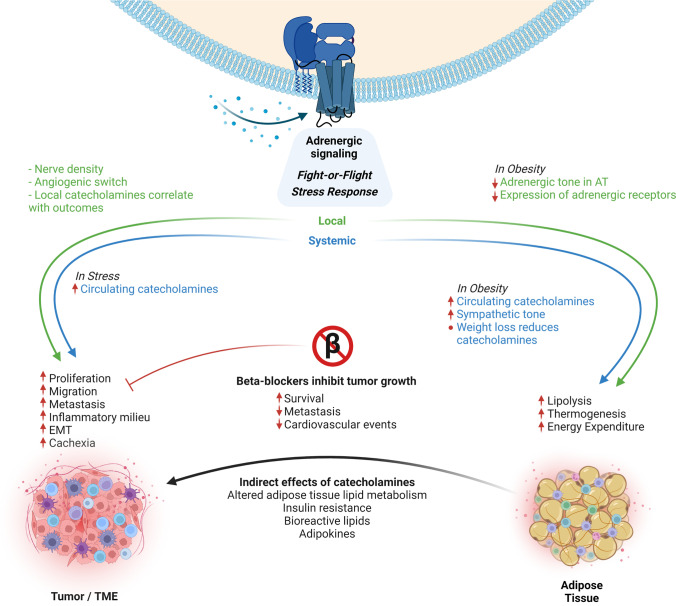Fig. 3.
Overview of adrenergic signaling in cancer and obesity. Adrenergic signaling activates lipolysis, thermogenesis, and energy expenditure in the adipose tissue. Within tumor and tumor microenvironment, adrenergic signaling activates different pro-tumorigenic processes including tumor cell proliferation, angiogenic switch, and epithelial-mesenchymal transition (EMT). Obesity is associated with elevated circulating catecholamines, which can be reduced upon weight loss, but adrenergic signaling is dampened locally within the adipose tissue, contributing to reduced energy expenditure and impaired adipose tissue function. This affects tumors through indirect catecholamine-mediated effects including bioreactive lipids and adipokines. Elevated circulating catecholamines are also present in stress. Many direct tumor-promoting processes, as well as tumor-associated complications (cardiovascular events, cachexia), can be counteracted by beta-blockers. The lack of associations between stress or beta-blockers and cancer outcomes in some studies may result from variabilities in adrenergic signaling due to obesity

